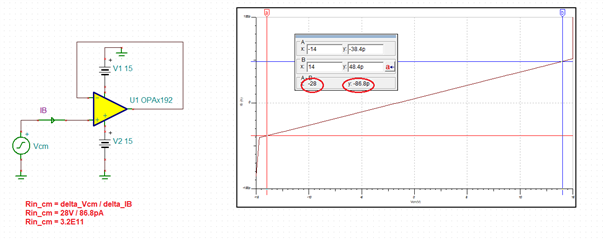Other Parts Discussed in Thread: OPA2192
Hi,
INA134 differential input impedance is 50kOhm stated in datasheet.
And in the blog below:
John Caldwell's reply said: The differential input impedance can be done "by inspection" by remembering that there is a "vitual short" between the two op amp inputs, and therefore R1 and R3 are in series for differential input voltages, 25k + 25k = 50k.
If that's the case, then for a general OP amp, the differential input impedance will be 0 since it's virtual shorted between IN+ and IN-.
But in OPA2192's datasheet, the differential input impedance is 100Mohm.
It makes me confused about the input impedance of an amp.



